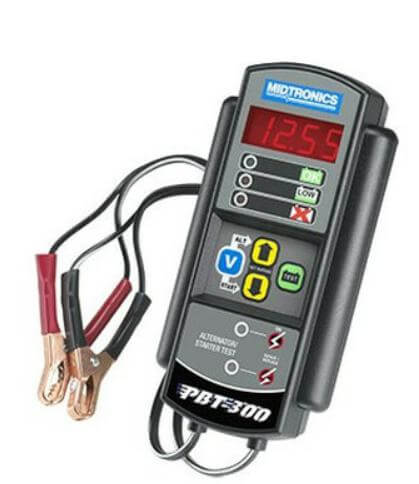What is Battery Conductance Testing
Battery Conductance Testing
Most DIYers think that a battery’s voltage is the only indication of its condition. Wrong. Battery voltage only tells you the battery’s State of Charge (SOC), it does not tell you anything about the battery’s State of Health (SOH). To determine battery SOH, you need to conduct either a load test, an internal resistance test or a battery conductance test.
What is a battery conductance test?
A battery conductance tester sends a small AC current

Battery conductance tester
pulse into the battery and monitors for a small AC voltage response. The ratio of current variation to voltage variation determines conductance. A conductance test is the opposite of a resistance test.
While a resistance test measures the difficulty of moving current through a circuit, a conductance test measures the ease with which current flows. Since greater internal resistance equals less conductance a battery’s conductance indicates how much useful grid plate area remains. Useful grid area determines the battery’s ability to hold and produce power.
If the battery has a cell short, open or high resistance, it will show during the conductance test.
So a conductance test is useful to determine a battery’s SOH
What is a battery load test?
Using a carbon pile, the battery is loaded to half of

Carbon pile load tester
its rating cold cranking amp ratings. The load is kept in place on the battery for 15-seconds. If the battery can maintain the load for 15-seconds without dropping below 9.6-volts (with the battery at room temperature).
The downside to a load test is that the battery must first be charged to at least 75% and the surface charge removed. Since the load is applied for a full 15-seconds the heat and load tend to age the battery slightly.
If the battery passes the test, it is considered good.
What is a battery resistance test and what does it tell you?
The internal cell plates are connected to a positive and negative bus bars inside the battery. Those internal connections can deteriorate over time, causing high internal resistance. In addition to high resistance at the connections, battery sulfation reduces the ability of the plates to produce or receive power. High resistance reduces the amount of power the battery can produce and reduces the amount of charging the battery can receive.
A battery with high internal resistance makes it much harder for the alternator to do its job and can actually cause multiple alternator failures.
©, 2022 Rick Muscoplat
Posted on by Rick Muscoplat